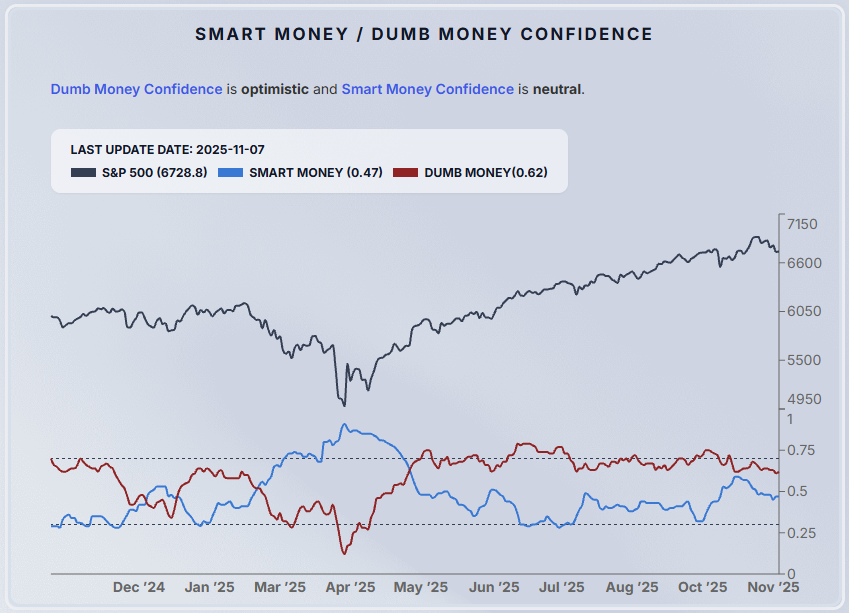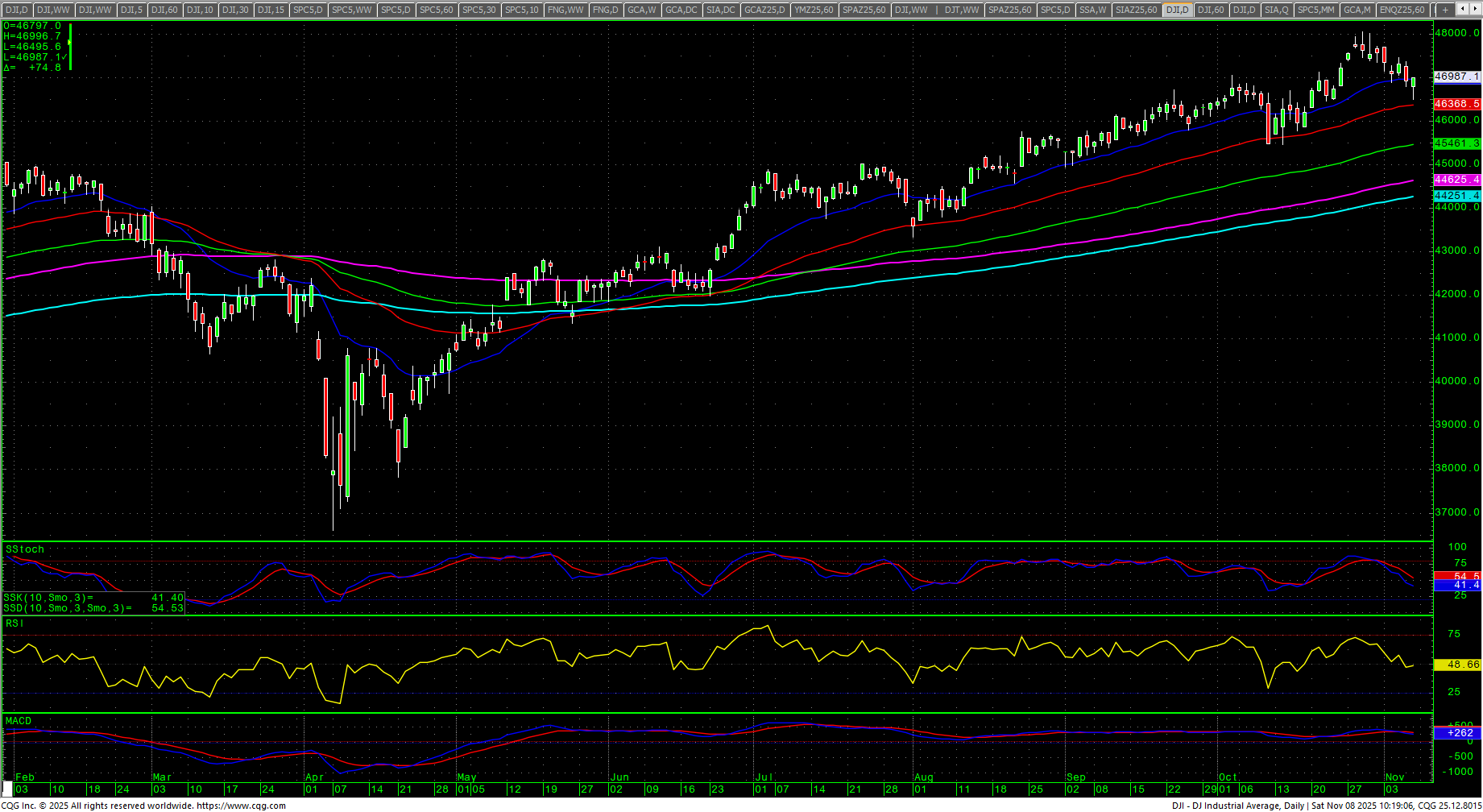TECHNICAL ANALYSIS (by Intraday Dynamics)
Cycle Timing Update: November 7, 2025
Timing Points in 2025

In the past two weeks, markets have issued a couple of dynamic shifts while sentiment remains decidedly in fear. Conflicted is the best way to describe indicators. Some are pointing to extreme fear, while others are suggesting extreme froth (particularly for the “dumb money”).
“The market has now issued multiple Hindenburg Omens, and now a Nasdaq Titanic Syndrome which can be a preliminary red-flag that prices are within a couple months of a major turning point.”
It is important to note that both of these cutely named indicators have been a punching bag for bulls throughout the years. That said: “During the 16 occurrences going back to 1987, the Nasdaq Composite has fallen by an average of 21.7% one year later, and has only been higher afterward 40% of the time.”—MorningStar
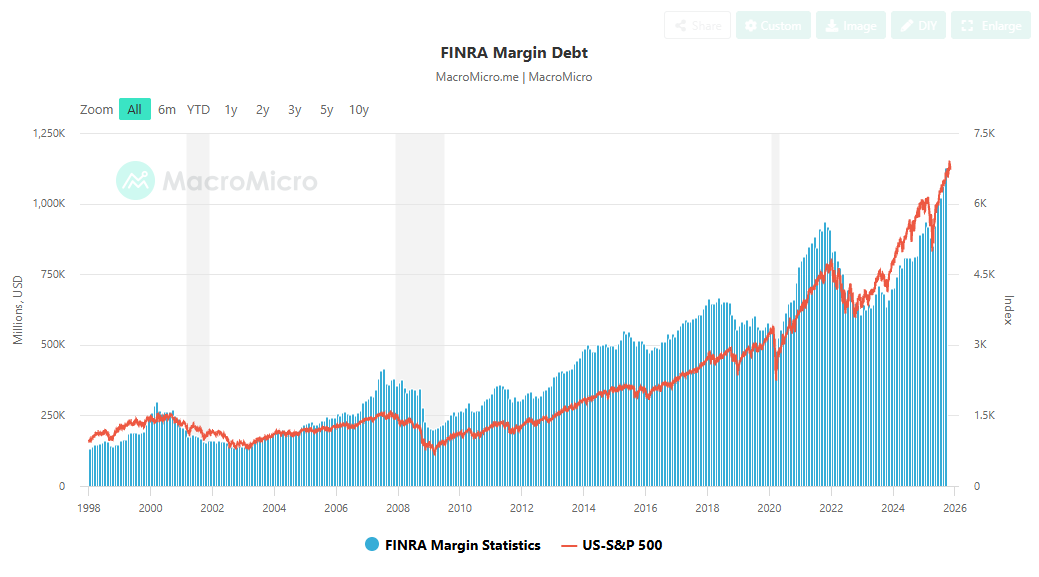
Add to this, fund managers got to their most bullish posture since February in the middle to late October…basically right at the recent highs.
Secured Overnight Financing Rate
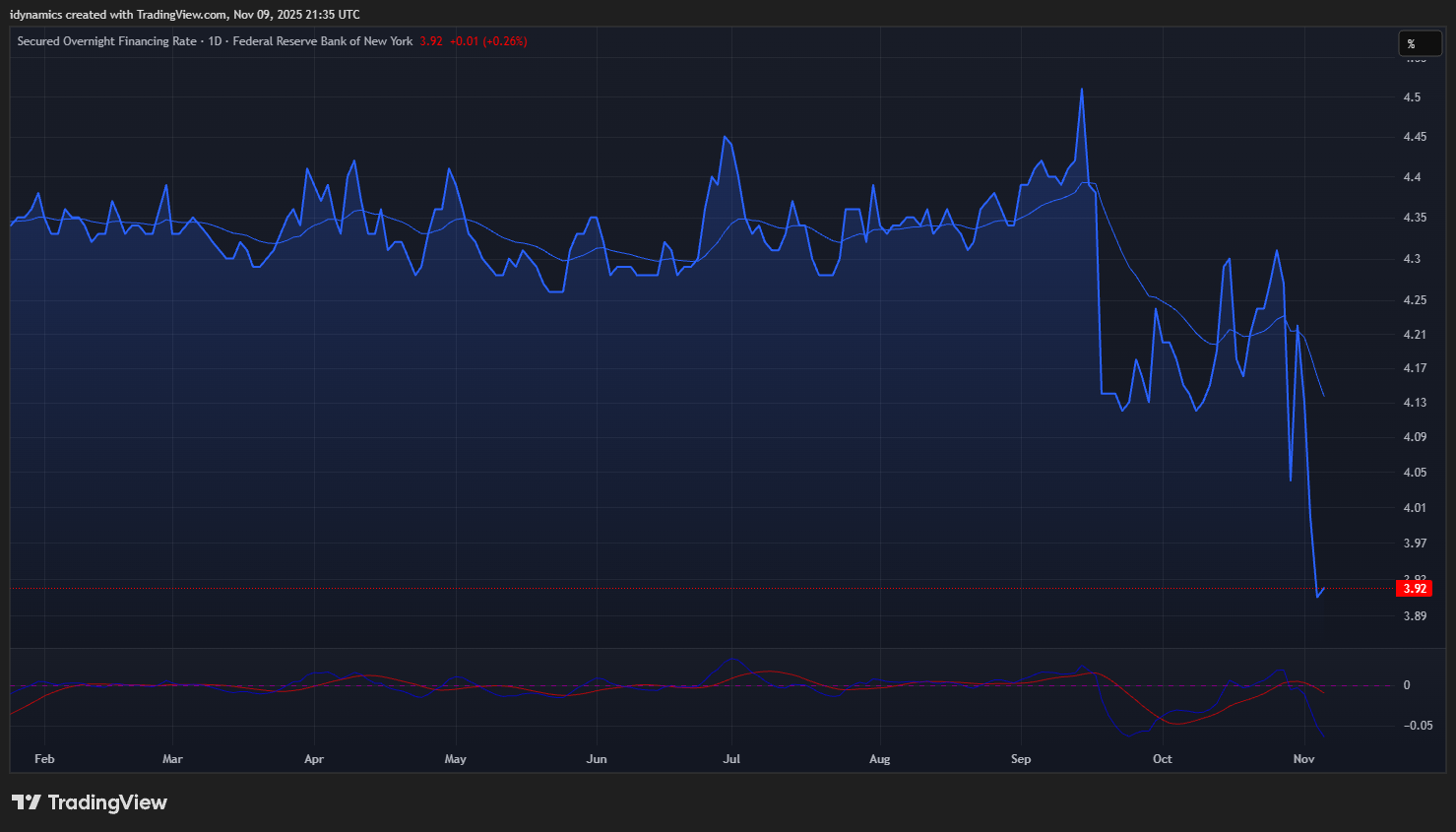
Some of the takeaways:
It just plunged 30 basis points — from 4.22% to 3.92% in six days.
That’s roughly $50 billion in annual borrowing cost savings…
…but is this collapse masking something more worrying for markets and the economy?
🧩 WHAT THE FED ISN’T SAYING
The Fed has already cut 150 basis points this year.
Reserves are flooding the repo market.
Overnight borrowing costs have dropped to levels not seen since September 2023 — the last time recession fears hit the radar.
Translation:
👉 The Fed sees something breaking and is trying to patch it before it’s visible.
⚙️ STILL, THE DROP OF THE SOFR SHOULD BE BULLISH IN THE SHORT TO MEDIUM TERM:
Bank funding costs fall 10–30 bps
Corporate loan rates fall ~15 bps
Adjustable mortgages reset ~20 bps lower
→ average monthly payments drop $200
Credit expands.
Lending accelerates.
Asset prices inflate.
But here’s the dark side: Every time SOFR has gone below 4% since 2008, an asset bubble followed.
Cheap money doesn’t fix weak growth — it hides it.
To this degree, here’s a reprint from Friday’s letter regarding Bubbles, with a reminder that last week Ray Dalio posted: “Stimulating Into a Bubble” And a second reminder that Michael Burry had come out of hibernation with his first Tweet in 2.5 years. Last week, it was announced that his Scion Asset Management had taken huge short positions. “Scion bought roughly $187.6 million in puts on Nvidia and $912 million in puts on Palantir, according to Securities and Exchange Commission filings.” PLTR -11.24%, NVDA -7.08%.
*******************************************
Is This a Bubble?

The current AI Bubble has been driven by insane valuations of only a handful of companies. The top ten stocks in the S&P 500 account for 80% of ALL growth in 2025 and 42%+ of the entire net worth of the S&P. If AI companies are removed from the economy, U.S. GDP has only grown by +0.1% all year.
Hyperscaling, Growth Hacking and Blitz Scaling are the buzz words used for today’s top stocks.
Wages are not Hyperscaling, job growth is not Hyperscaling. The only thing Hyperscaling in a “K Shaped Economy” is the wealth of the top 1-2%.
In a twist of irony, Open A.I. is asking the taxpayers to provide ‘loan guarantees’ for up to $1 trillion dollars in investments. A company with zero profits, that promises to go public at a valuation of $500 billion, wants the government to guarantee $1 trillion in speculative investment in a technology that is totally unregulated and for which no one knows exactly what the outcome might be.
So far, AI has given us “AI Slop,” videos that are basically undetectable from something genuine and robots that foment trash talk in comment sections of social media feeds because…Rage Sells.
*******************************************
How does this fit into the timing window? There is still a strong possibility that with the Fed easing, it could send fund managers scrambling to beef up their 2025 numbers and chasing a vertical blowoff. The biggest problem with this scenario is the public. Plebeians are struggling and buying stocks on margin. And: Cheap money doesn’t fix weak growth — it hides it.
The economic indicators are deteriorating. Without the CAPEX in AI ventures (which are not profitable…and are funded by a ridiculous circular financing scheme ⬆️), the U.S. economy is staggering.
If it starts stumbling harder, no amount of Fed intervention will really matter, It may keep financial assets artificially high for a bit…but cannot fix weak growth.
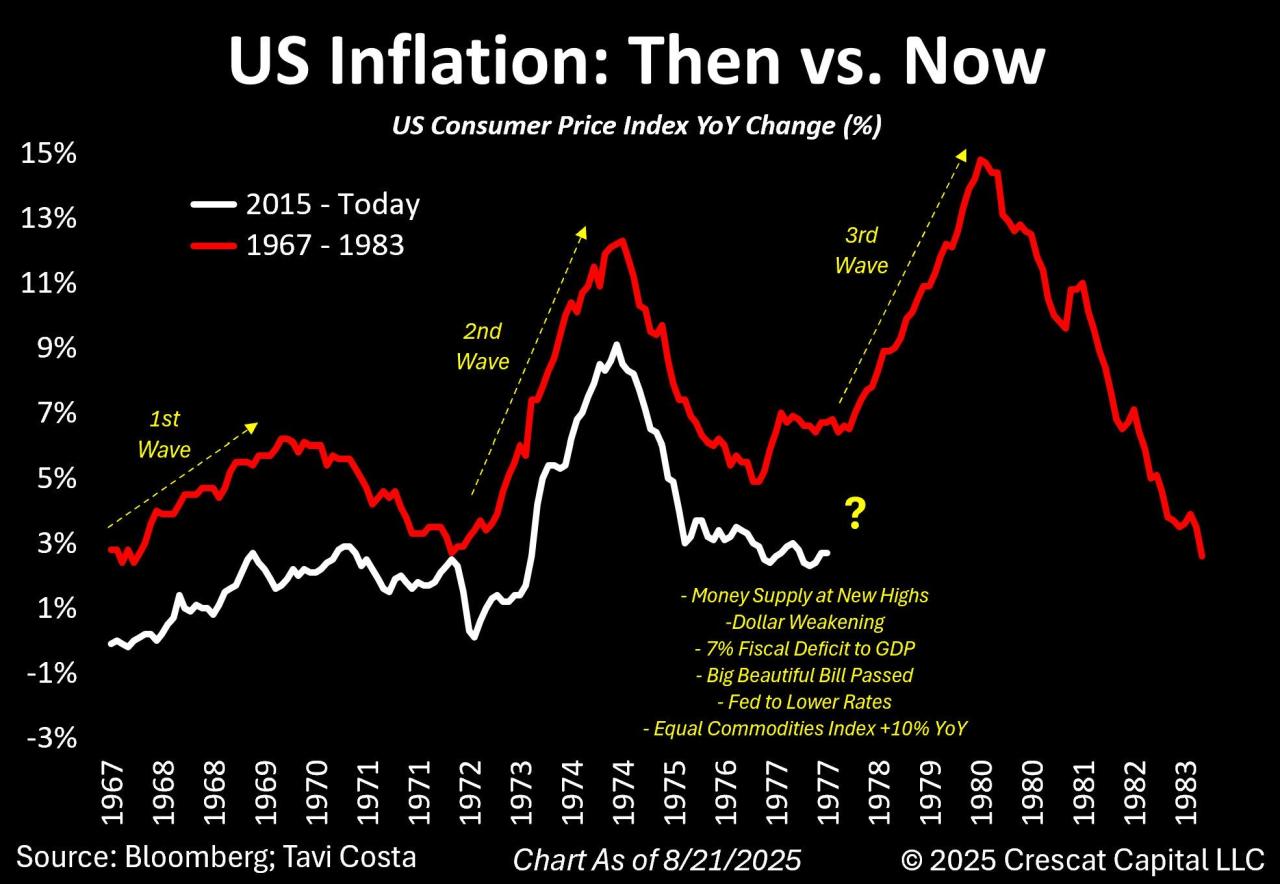
Timing Points
The next key window is 11/19-20 and we have a CRITICAL window hitting in the middle of December. The entire month of January 2026 lights up huge with the timing and the first trading week of the year could be filled with fast moves and increased volume/volatility. There is another big window of the 19th through the 21st. Then the final trading days of January have strong timing. Again, this long window runs into the middle of February and then the first week of March could see fireworks.
- 11/14 **
- 11/19-20 ***
- 11/25 **
- 12/04 ***
- 12/15 *** X may run through
- 12/17 *** X key to bonds/interest rates
- 12/24 **
- 01/09 *** X critical/fast moves
- 01/19-21 *** X
- 01/29-30 ***
Here are the technical data reprinted from Friday’s market report:
Dow Jones Industrial Average
Dow Jones Industrial Average Weekly H-L-C
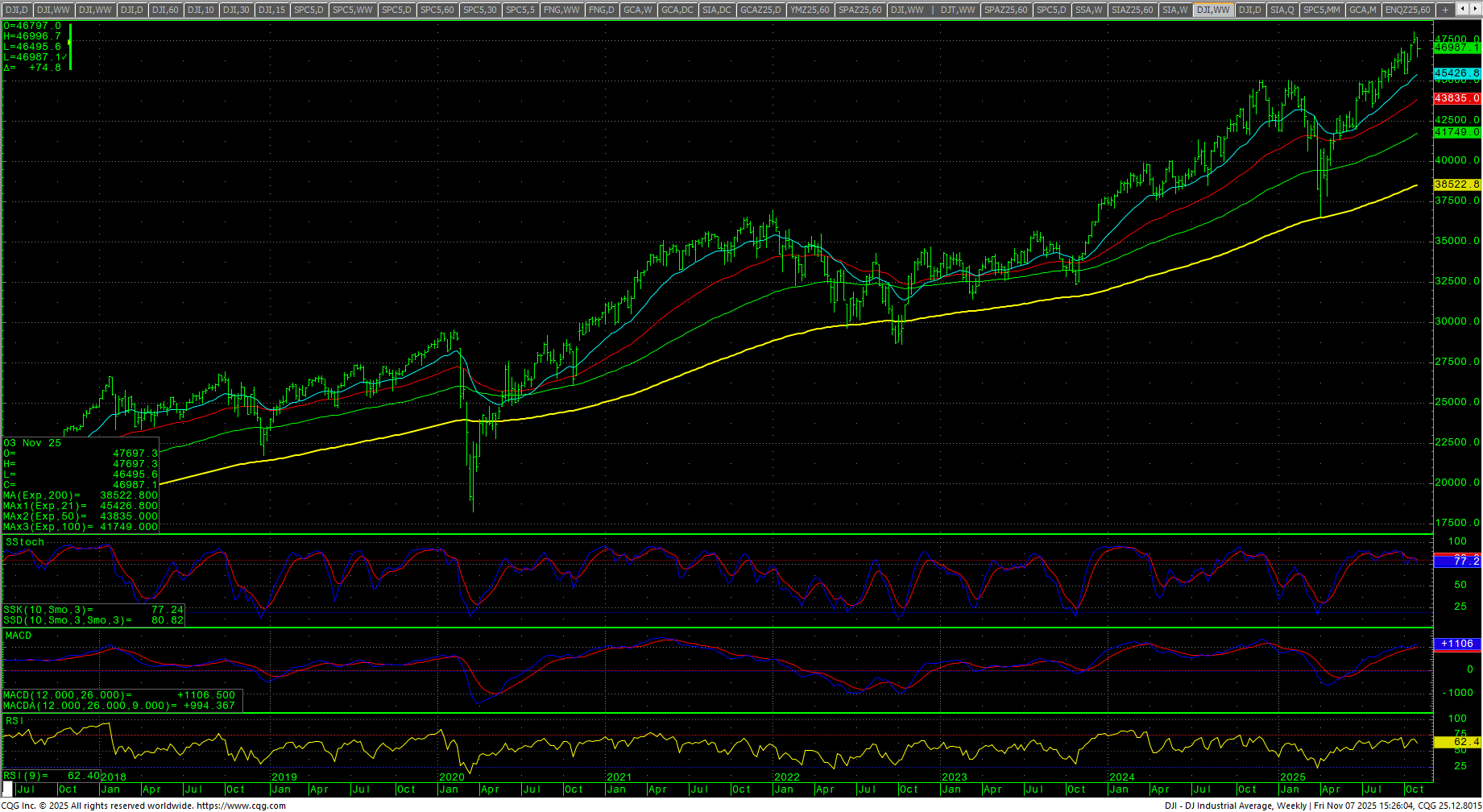
Dow Jones Industrial Average Weekly Candles
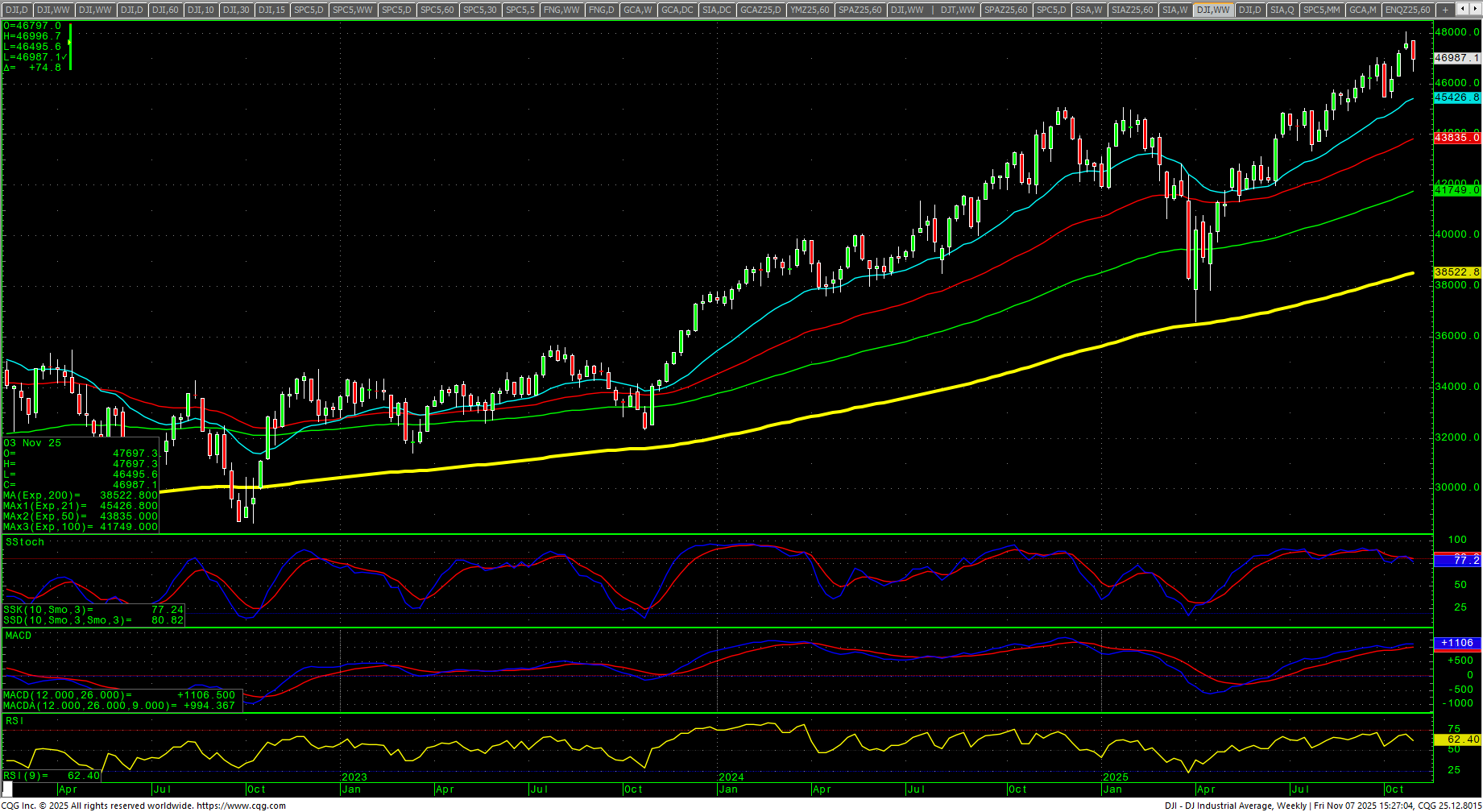
Dow Jones Industrial Average Hourly H-L-C
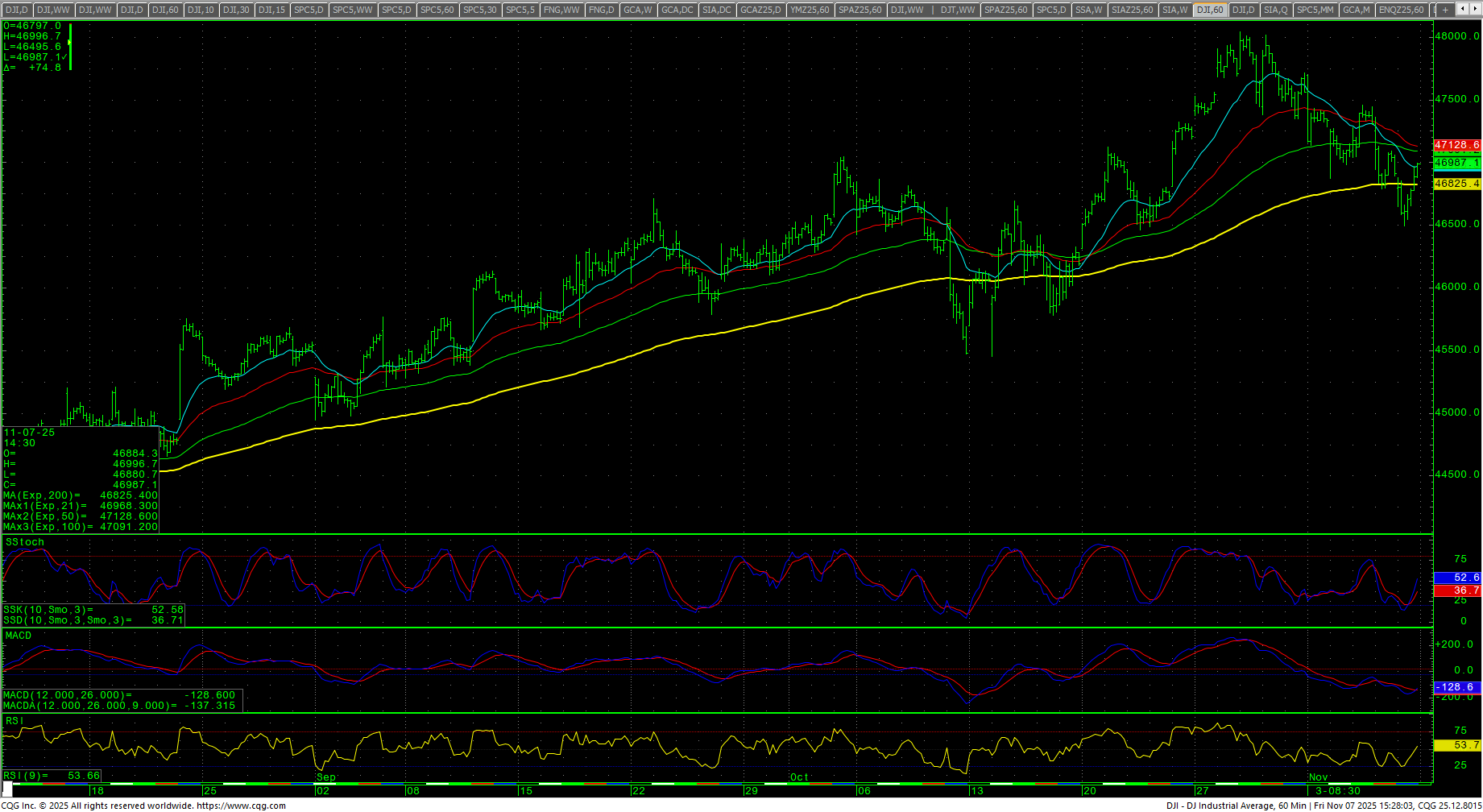
Dow Jones Industrial Average Daily Candles
| Resistance | Support |
|
|
S&P 500 Cash Index: SPX
S&P 500 Index Weekly H-L-C

SPY Weekly Candles
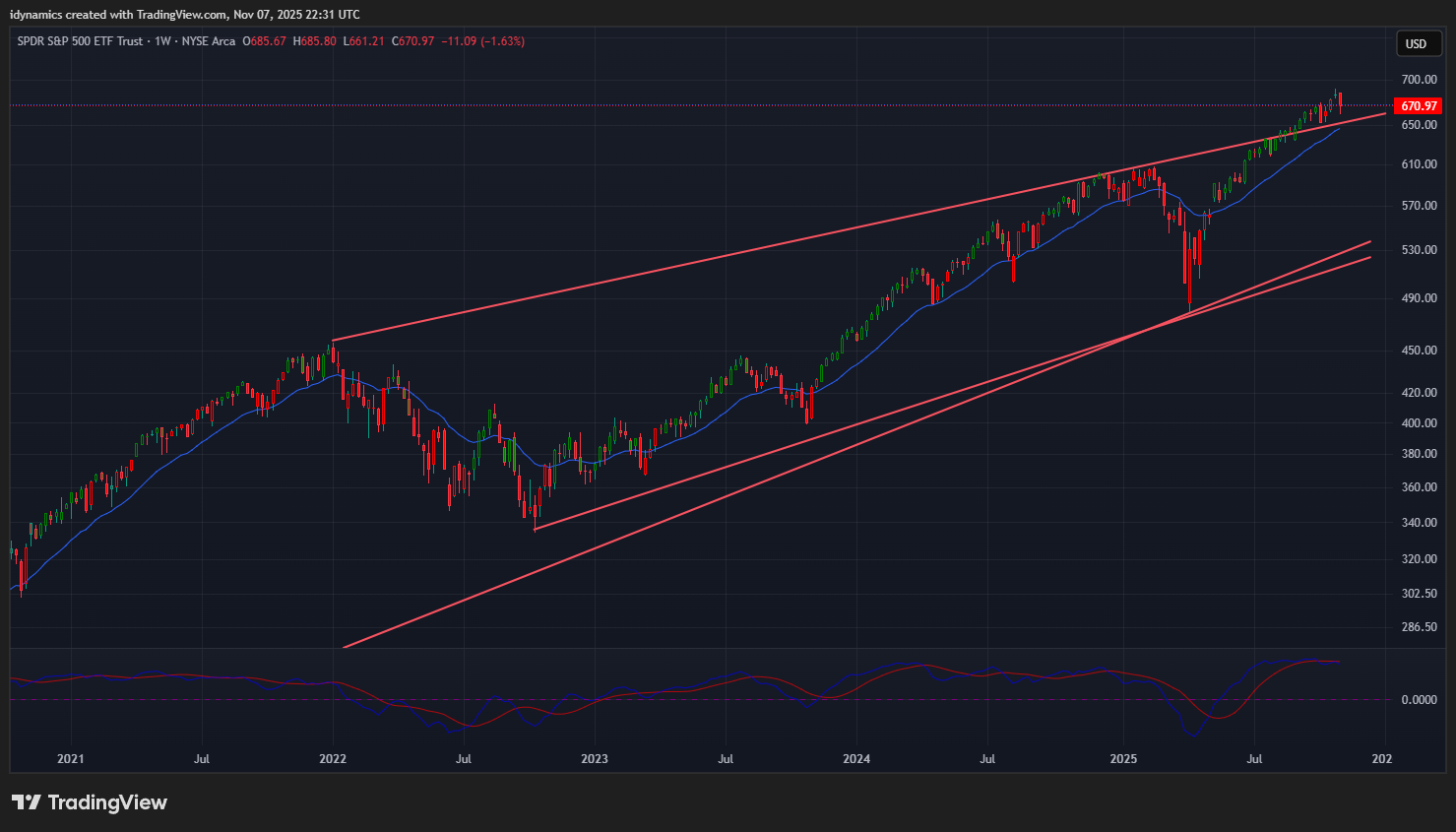
S&P 500 Index Hourly H-L-C
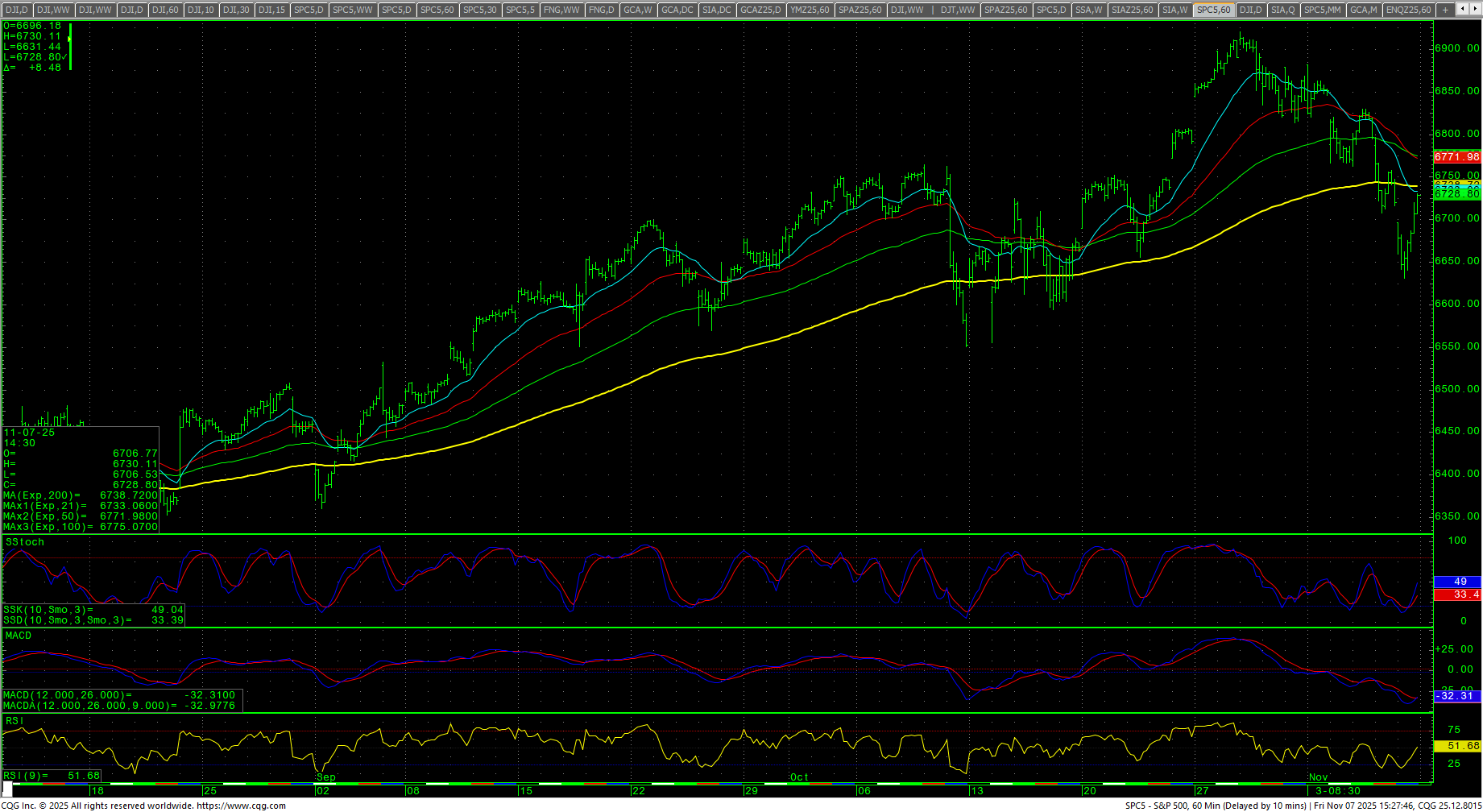
| Resistance | Support |
|
|
Charts courtesy of CQG, Inc., CNN, Koyfin, Trading View and AAII


